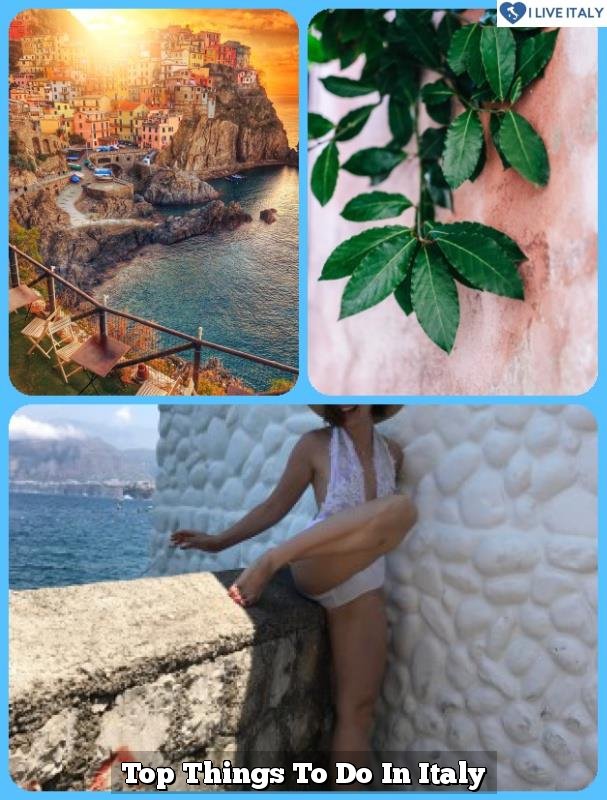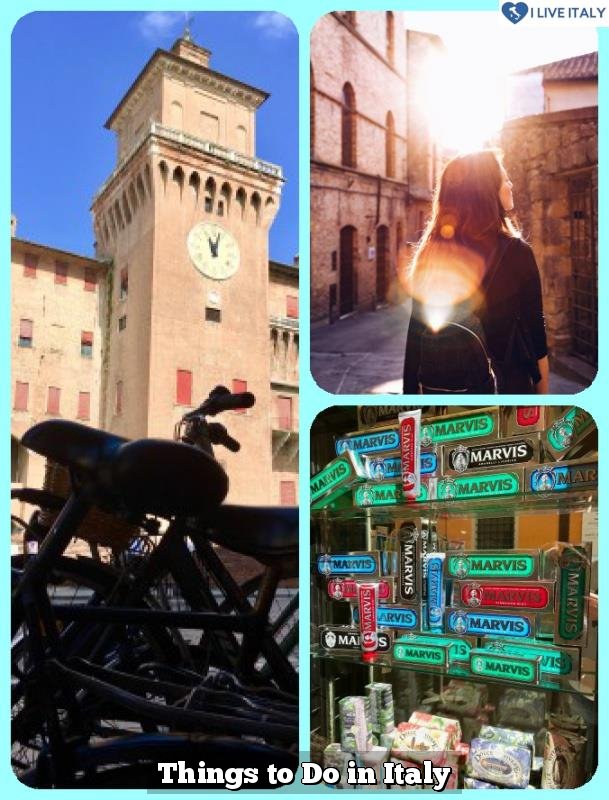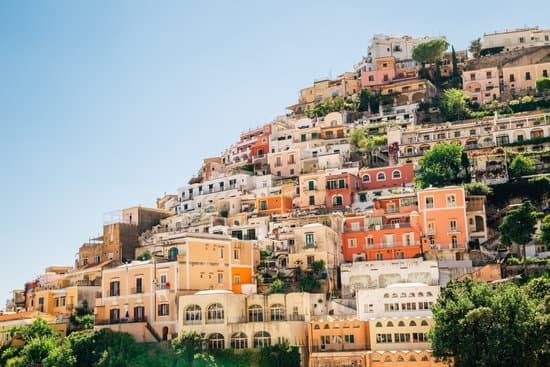Italy is a country known for its rich history, stunning art and architecture, delectable cuisine, and breathtaking landscapes. Whether you’re planning a visit to the ancient ruins of Rome, the romantic canals of Venice, or the scenic Amalfi Coast, there are a few important things to know before traveling to Italy. From language and communication to cultural norms and dining etiquette, this introductory section aims to provide travelers with essential insights for an unforgettable experience in Italy.
When it comes to traveling in Italy, understanding the country’s cultural heritage and attractions is crucial. From the iconic Colosseum to the charming Tuscan countryside, Italy has something to offer every type of traveler. With its blend of ancient history and modern vibrancy, it’s no wonder why Italy consistently ranks as one of the top tourist destinations in the world.
Before immersing yourself in all that Italy has to offer, it’s important to familiarize yourself with some key aspects of Italian life. This could range from basic language skills and communication tips to navigating transportation systems and respecting local customs. By doing so, travelers can fully embrace the Italian lifestyle and make their trip truly unforgettable.
Language and Communication in Italy
When traveling to Italy, it’s important to have some knowledge of the Italian language and communication etiquette. While many Italians in tourist areas speak English, having a few key phrases in Italian can go a long way in making connections with locals. Here are some useful Italian phrases for travelers to know:
- Buongiorno (Good morning).
- Grazie (Thank you).
- Per favore (Please).
- Dove si trova ? (Where is ?).
- Posso avere il conto? (Can I have the bill?).
In addition to knowing some basic phrases, understanding non-verbal communication is also essential when visiting Italy. Italians are known for being expressive with their gestures, so paying attention to body language can help bridge any language barriers.
In terms of English as a widely spoken language in tourist areas, it’s true that many Italians working in the tourism industry are proficient in English. However, venturing off the beaten path or exploring more local spots may require more Italian proficiency. It’s always respectful to at least attempt speaking Italian before defaulting to English when communicating with locals.
While learning another language might seem daunting, making an effort to understand and communicate in Italian can not only enhance your travel experience but also show respect for the local culture. Whether it’s ordering a meal at a trattoria or asking for directions on the streets of Rome, embracing the language and communication customs of Italy can lead to more meaningful interactions during your travels.
Italian Cuisine and Dining Etiquette
Italy is world-renowned for its delicious cuisine, and experiencing the local food is definitely a highlight of any trip to the country. Italian cuisine varies from region to region, with each area having its own specialties and traditional dishes. When dining in Italy, it’s important to understand the etiquette and customs associated with eating out.
Some must-try dishes when visiting Italy include:
- Pasta dishes such as spaghetti carbonara, fettuccine Alfredo, and gnocchi.
- Pizza from Naples, the birthplace of this beloved dish.
- Risotto from Northern Italy, particularly Milan and Lombardy.
- Gelato or Italian ice cream.
In addition to trying the amazing culinary offerings in Italy, travelers should be aware of dining etiquette and customs in the country:
- Tipping is not as common in Italy as it is in other countries. A service charge is often included in the bill at restaurants.
- Meals are a leisurely affair in Italy. It’s common for dinners to last several hours, allowing for ample time to savor each course and enjoy good conversation.
- Lunch is generally served between 12:30 PM and 2:00 PM, while dinner is usually enjoyed after 8:00 PM.
Finally, it’s essential for travelers to embrace the authentic dining experiences that Italy has to offer. From family-run trattorias to Michelin-starred restaurants, there are diverse options available for every palate and budget. Immerse yourself in the local food culture, savor every bite, and enjoy the warm hospitality that comes with sharing a meal in Italy. Buon appetito.
Navigating Transportation in Italy
When traveling in Italy, navigating transportation is an important aspect to consider in order to make the most of your trip. Italy offers a well-developed public transportation system that includes trains, buses, and trams, making it relatively easy to get around the country. Understanding the different options available and how to use them can greatly enhance your travel experience.
Overview of Public Transportation
Italy’s train system is one of the most efficient ways to travel between cities and regions. The high-speed trains, known as “Frecciarossa” or “Frecciargento,” connect major cities like Rome, Milan, Florence, and Venice with fast and comfortable service. Additionally, regional trains provide access to smaller towns and attractions off the beaten path. Buses and trams are also widely available in urban areas for convenient local transportation.
Tips for Renting a Car
For travelers looking for more flexibility and independence, renting a car can be a great option for exploring Italy’s picturesque countryside and hidden gems. It’s important to familiarize yourself with local driving laws and regulations before hitting the road. Keep in mind that Italian drivers can be assertive, so it’s essential to stay attentive and confident while driving.
Purchasing Tickets in Advance
When using the train system in Italy, purchasing tickets in advance is highly recommended, especially for long-distance journeys on high-speed trains. This not only ensures a seat reservation but also allows you to take advantage of early booking discounts.
Many train tickets can be purchased online through the official Trenitalia website or at ticket kiosks located at railway stations throughout the country. Familiarizing yourself with the different classes of service and ticket types will help you make informed decisions about your travels within Italy.
By understanding Italy’s public transportation system and considering your options for getting around, you can maximize your time exploring this beautiful destination without feeling overwhelmed by logistics. Whether you choose to travel by train or rent a car, being prepared will allow you to focus on enjoying all that Italy has to offer.
Cultural Etiquette and Social Norms
Italy is a country rich in cultural traditions and social norms that visitors should be aware of in order to show respect and appreciation for the local way of life. When it comes to greetings, Italians commonly use physical contact such as handshakes, hugs, or kisses on the cheeks.
It’s important to follow the lead of the person you are greeting and reciprocate in a similar manner. Additionally, Italians value personal space and tend to stand closer during conversations compared to some other cultures.
In terms of visiting historic sites, churches, and museums, it’s essential to dress appropriately and adhere to specific guidelines. This often means covering shoulders and knees when entering religious sites out of respect for the sanctity of these spaces. Visitors should also observe any rules regarding photography or quiet behavior within these establishments. Furthermore, being mindful of Italian holiday traditions and cultural events can enhance the travel experience by providing insight into local customs and celebrations.
| Italian Cultural Norms | Considerations for Travelers |
|---|---|
| Greetings with physical contact | Follow the lead of locals and reciprocate similarly |
| Dressing appropriately at religious sites | Use attire that covers shoulders and knees out of respect |
| Observing holiday traditions | Enhance travel experience by participating or learning about local customs |
Understanding these cultural etiquette nuances will not only show respect for Italian ways but also provide a more immersive experience that goes beyond just sightseeing. By embracing these customs, travelers can foster meaningful connections with locals and gain a deeper appreciation for Italy’s rich heritage.
Additionally:
- When visiting someone’s home in Italy for example on business trip; if you bring something from your hometown the host will usually appreciate it.
- If an Italian offers you something from their plate or glass they’re sharing with you; refuse politely once but accept graciously on second offer.
- Be mindful during conversations; direct eye contact is highly important in Italy so be sure to maintain eye contact while speaking or listening.
Safety and Health Tips for Travelers
Italy is known for its stunning historical sites, beautiful landscapes, and vibrant culture, making it a popular destination for travelers from around the world. However, like any travel destination, it’s essential for visitors to be mindful of their safety and health during their trip.
When exploring Italy, tourists should be aware of common safety concerns such as pickpocketing and tourist scams. It’s important to remain vigilant in crowded places and tourist hotspots, and to keep valuables secure at all times.
In addition to safety considerations, travelers should also familiarize themselves with healthcare options and pharmacies in Italy. While emergency services are available, it’s beneficial to know where local medical facilities are located in case of unexpected illness or injury. It’s also advisable to carry necessary medications and have access to travel insurance that provides coverage for medical expenses abroad.
Another important aspect of staying safe and healthy while traveling in Italy is staying informed about current events and potential risks in specific regions. Travelers can check government advisories and the latest news updates to make informed decisions about their itinerary and activities. By being prepared and aware of potential safety and health concerns, visitors can ensure a smooth and enjoyable travel experience in Italy.
| Safety & Health Tips for Travelers | Italy |
|---|---|
| Remain vigilant against pickpocketing & tourist scams | Be mindful of personal belongings in crowded areas |
| Familiarize with local healthcare options & pharmacies | Know the location of medical facilities for emergencies |
| Stay informed about current events & potential risks |
Essential Packing and Dress Code Advice
Italy’s diverse landscapes and varied climates make it essential for travelers to pack appropriately for their trip. When visiting Italy, it is important to consider the regional differences in weather and dress codes.
For coastal areas such as the Amalfi Coast or Sicily, lightweight and breathable clothing is ideal, especially during the summer months when temperatures can soar. In contrast, regions like the Italian Alps or Dolomites require warmer layers and waterproof gear if visiting during the winter for skiing or snow activities.
Footwear is another crucial consideration when packing for Italy. Comfortable walking shoes are a must, especially for exploring cities with cobblestone streets and historic sites. For women, stylish yet comfortable sandals are a popular choice during the warmer months, while men may opt for stylish loafers or casual sneakers. Additionally, if planning to visit beaches or coastal towns, packing beach-appropriate attire is recommended to fully enjoy the Mediterranean sunshine.
Italians are known for their impeccable sense of style and fashion-conscious culture. While there isn’t a strict dress code for most tourist attractions in Italy, it’s advisable to dress modestly when visiting religious sites such as churches and basilicas.
This means avoiding revealing clothing or wearing hats indoors out of respect. In general, Italians tend to dress well even in casual settings, so travelers may feel more comfortable blending in by choosing smart-casual attire when dining out or attending cultural events.
Lastly, travelers should consider practical items such as sunscreen, sunglasses, a wide-brimmed hat for sun protection, and a reusable water bottle to stay hydrated while sightseeing. Packing versatile clothing that can be layered is key to adapting to changing weather conditions throughout Italy’s various regions. By carefully considering both fashion and function in their packing choices, travelers can ensure they have everything they need for an enjoyable and comfortable experience exploring all that Italy has to offer.
Planning for Currency and Budgeting
When planning a trip to Italy, it’s important for travelers to understand the country’s currency and how to effectively budget for their visit. Here are some essential tips for managing expenses and making the most of your travel budget.
Understanding the Euro and Currency Exchange
Italy uses the euro as its official currency, and visitors should familiarize themselves with the current exchange rate before their trip. It’s recommended to exchange a small amount of cash upon arrival at a bank or currency exchange office for immediate expenses. Additionally, many businesses in tourist areas accept major credit cards, but it’s wise to carry some euros for smaller purchases and transactions.
Tips for Budgeting and Managing Expenses
To make the most of your travel budget in Italy, consider researching average costs for accommodations, meals, transportation, and attractions in various regions. Budgeting for daily expenses can help ensure that you have sufficient funds throughout your trip. Additionally, look out for free or discounted activities in Italy, such as visiting public parks, attending local festivals, or taking advantage of museum “free admission” days.
Insights into Saving Money with Local Deals
By taking advantage of local deals and offers, travelers can enhance their experience while saving money. Look out for special promotions at restaurants and tour companies, seek out happy hour specials at bars and cafes, and consider purchasing city passes or museum cards for discounted entry fees. Embracing local customs such as enjoying an aperitivo (an early evening drink accompanied by snacks) can also be a cost-effective way to savor Italian culture.
By having a solid understanding of currency exchange, effective budgeting strategies, and opportunities for saving money with local deals, travelers can make the most of their experience in Italy without overspending. With careful planning and financial mindfulness, visitors can truly savor all that Italy has to offer while staying within their budget constraints.
Conclusion – Essential Tips for an Unforgettable Experience in Italy
In conclusion, traveling to Italy offers an unforgettable experience filled with rich history, diverse culture, and breathtaking attractions. By understanding essential tips for communication, dining etiquette, transportation, cultural norms, safety and health considerations, packing advice, currency management, and budgeting, visitors can make the most of their time in this beautiful country. Embracing the Italian lifestyle and savoring every moment will surely lead to a transformative journey that fosters cultural understanding and appreciation.
It is important for travelers to remember to embrace the vibrant Italian culture by indulging in authentic cuisine, respectfully visiting historic sites and museums, and participating in local traditions and events. Engaging with locals through basic Italian phrases and respectful gestures can further enhance the overall experience. Additionally, being mindful of personal safety and health considerations while exploring various regions of Italy is crucial for a smooth and enjoyable trip.
Ultimately, traveling Italy is not just about visiting famous landmarks or trying delicious food; it’s about immersing oneself in the rich tapestry of history, art, tradition, and lifestyle that make this country so special. By following these essential tips when visiting Italy, travelers can ensure an unforgettable experience that will leave a lasting impression and create cherished memories for years to come.
Frequently Asked Questions
What do I need before traveling to Italy?
Before traveling to Italy, it’s important to make sure that you have a valid passport with at least six months of validity remaining. Depending on your nationality, you may also need to obtain a visa before your trip. It’s also essential to have travel insurance and any necessary vaccinations before traveling.
How do I prepare for a trip to Italy?
When preparing for a trip to Italy, it’s important to research the places you want to visit and create an itinerary. It’s also helpful to learn some basic Italian phrases and customs to show respect for the local culture.
Packing appropriate clothing for the season and planning out your transportation within the country are also important steps in trip preparation.
What do Americans need when traveling to Italy?
When traveling to Italy, Americans need to ensure that they have a valid passport that does not expire within six months of their planned departure date from Italy. As of 2021, Americans do not need a visa for stays in Italy that are less than 90 days, but it is always best to check the latest entry requirements before traveling.
Additionally, having travel insurance is highly recommended for American travelers visiting Italy.

I’m a passionate traveler, writer, and Italophile. My fascination with Italy’s history, art, and culture has led me on countless adventures across the Italian landscape. Through “I Live Italy,” I share my love for this extraordinary country and aims to inspire others to explore its boundless beauty.





